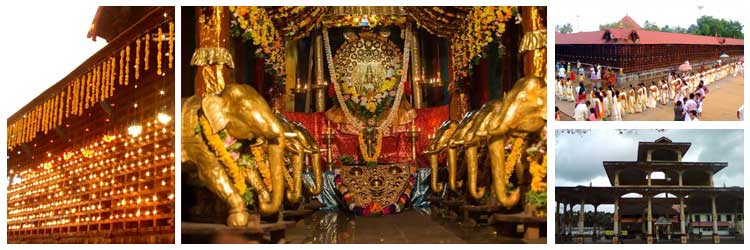Kumarakom - Ettumanoor Mahadeva Temple
Kumarakom - Ettumanoor Mahadeva Temple
Ettumanoor Mahadeva Temple is a popular and historic temple that draws thousands of devotees not only from India but also from abroad. Situated in the town of Ettumanoor near Kumarakom, in the Kottayam district, this temple is dedicated to Lord Shiva. The history, architecture, and cultural practices associated with the temple make it a revered destination for both pilgrims and tourists.
The temple, believed to be built in the 16th century, showcases the architectural brilliance of the Dravidian style. The towering gopuram (gateway) adorned with intricate carvings sets the stage for the wonders within. Step inside and your gaze will be drawn to the mesmerizing murals that grace the walls. These frescoes, depicting scenes from Hindu mythology like the Ramayana and Mahabharata, are a testament to the artistic prowess of bygone eras. A true masterpiece is the depiction of Lord Shiva as the cosmic dancer, Nataraja, considered one of the finest wall paintings in India.
The history of the Ettumanoor Mahadeva Temple dates back to the 16th century. It is believed that both the Pandavas and the sage Vyasa worshipped here. The great philosopher Adi Shankaracharya is said to have composed the renowned 'Soundarya Lahari' while staying at this temple. The temple's rich history is also reflected in its Dravidian architecture, which showcases the skill and craftsmanship of the Vishwakarma Sthapathis.
The ten-day-long Arattu festival is the most significant celebration at the Ettumanoor Mahadeva Temple. During this festival, the 'Ezharaponnana Ezhunallathu' takes place, featuring the procession of seven-and-a-half golden elephants. These golden elephants, weighing close to 13 kilograms, are made of pure gold and are displayed for devotees to witness and worship. The festival attracts thousands of pilgrims and is a grand spectacle of devotion and cultural heritage.
Visiting Ettumanoor Mahadeva Temple offers a unique spiritual experience. The temple's serene environment and divine ambience provide a perfect setting for meditation and inner reflection. Participating in the temple rituals and poojas can bring a sense of peace and spiritual fulfilment, helping visitors connect with their inner selves and experience tranquillity.
Frequently Asked Questions

| Best Time to Visit | Entry Time | Visiting Hours | Entrance Fee |
|---|---|---|---|
| Throughout the year. | 4 AM to 12 PM.5 PM to 8:30 PM. | 30 Mins to 1 Hr. | No |
Availability of Guides :-
Shopping:-
Activities:-
Adventure:-
Relaxation:-
Famous for:-

